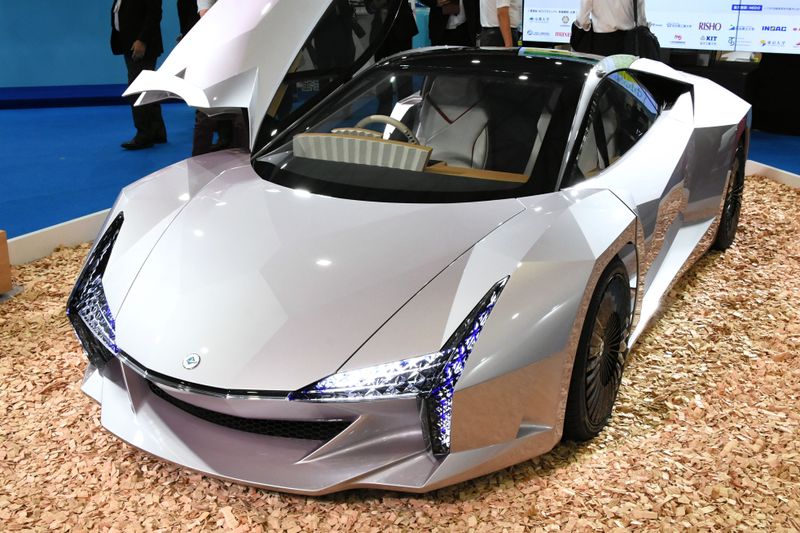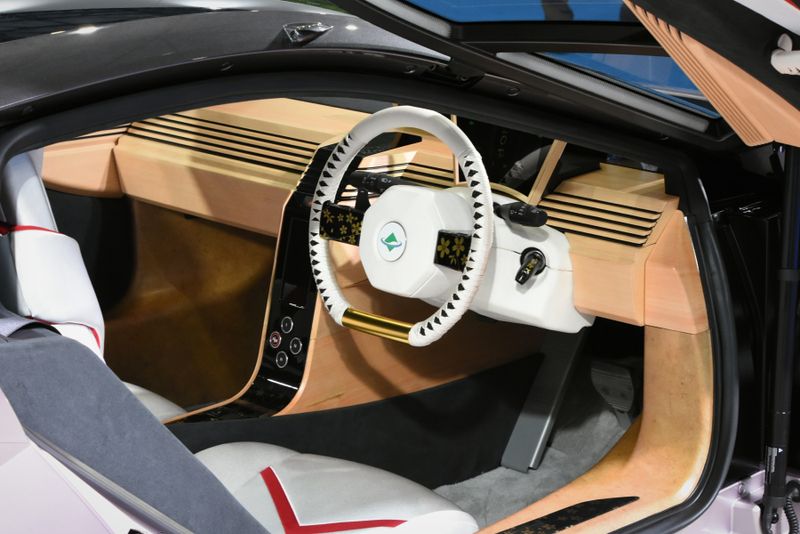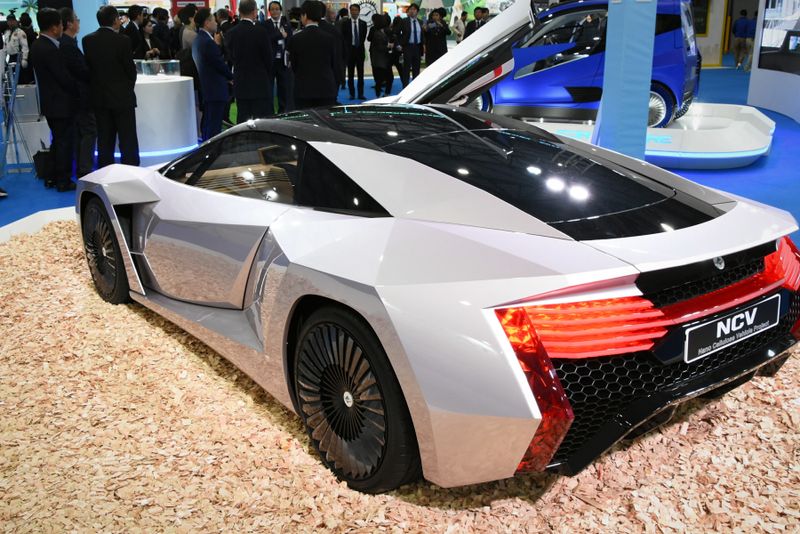Oct 30, 2019
Amazing car made from wood drives carbon-free future at Tokyo Motor Show 2019

Visitors to the Tokyo Motor Show 2019 are getting a glitzy look at a future of mobility driven by an eco-conscious, and while many of the major manufacturers are going electric one project is taking a different approach to greener motoring with a car made out of wood.
At the booth of the Ministry of the Environment visitors to the 46th Tokyo Motor Show can see the spectacular and sporty Nano Cellulose Vehicle (NCV), the fruit of a project headed up by a team at Kyoto University that aims to reduce the weight of cars in order to achieve a reduction of CO2 emissions.
The project bills the NCV as the “ultimate zero CO2 material vehicle” for which a number of body and interior parts are made from cellulose nanofibers (CNF) -- a next-generation material one-fifth the weight of steel and five times stronger, according to the project team.
Derived from plants and trees cellulose nanofibers are typically made by first pulping wood and then fibrillating this to nano levels to make nanofibers which are mixed into a resin to give it increased strength.
A total of 13 parts of the vehicle on display at TMS 2019 are made using the next-generation material, including the bonnet, which is made from CNF only.


The NCV Project was launched in October 2016 with 22 organizations, including universities in Japan, research institutes and automotive manufacturers, working under the leadership of a team at Kyoto University to reduce CO2 emissions from vehicles by making the vehicles lighter at the same time as maintaining their strength.
The project aims to achieve by 2020 a 10-percent reduction in weight which is calculated to result in a reduction of CO2 emissions by a total of 2,000 kg (equivalent to the annual household CO2 emissions of one person in Japan) throughout a vehicle’s lifecycle -- from production of parts to their disposal.
The project was giving an early public airing at environment and energy exhibit EcoPro 2016 held at Tokyo Big Sight in December that year.
“Around 20% of the greenhouse gases, or GHGs, currently being emitted domestically in Japan comes from the transport sector. To realize a carbon-free society after The Paris Agreement there is a need to massively reduce the emission of GHGs. But this requires bold technological innovation,” says Hirofumi Aizawa, the director of the Climate Change Projects Office at the government’s environment ministry, during a video promotion for the project.
The people behind the project would appear to be looking in the right direction for solutions.
With 70 percent of Japan being forested, two thirds of this planted including with Japanese cedar and Japanese cypress trees, some 15 million tons of CNF can be derived from Japan’s trees, according to NCV Project Sub Leader, Hiroyuki Yano of Kyoto University.
No shortage of the materials needed to build this particular future of mobility, then. However, while those in Japan who suffer from kafunsho hay fever might be happy to see Japan’s cedar and cypress trees manifest as a carbon-neutral sports car rather than irritable eyes and a runny nose, costs and supply chain remain issues facing the NCV, according to the project team.
For the time being then the NCV Project car can be viewed at the Tokyo Motor Show 2019 at the Ministry of the Environment booth in the show’s Aomi Exhibition Hall.
As well the NCV Project the ministry is using its booth at TMS 2019 to showcase “Cool Choice,” the ministry’s initiative to encourage the general public to make smarter choices related to products, services and lifestyle that can contribute to countermeasures against global warming.
The initiative was launched on the back of the government’s Plan for Global Warming Countermeasures decided on by the Cabinet in May, 2016. Based on the terms of the 2015 Paris Agreement the Japanese government has set a goal to reduce greenhouse gas emissions by 26 percent in 2030, compared to those in fiscal 2013.

Tokyo Motor Show 2019 runs until November 4 at Tokyo Big Sight in the capital's Koto ward.



0 Comments